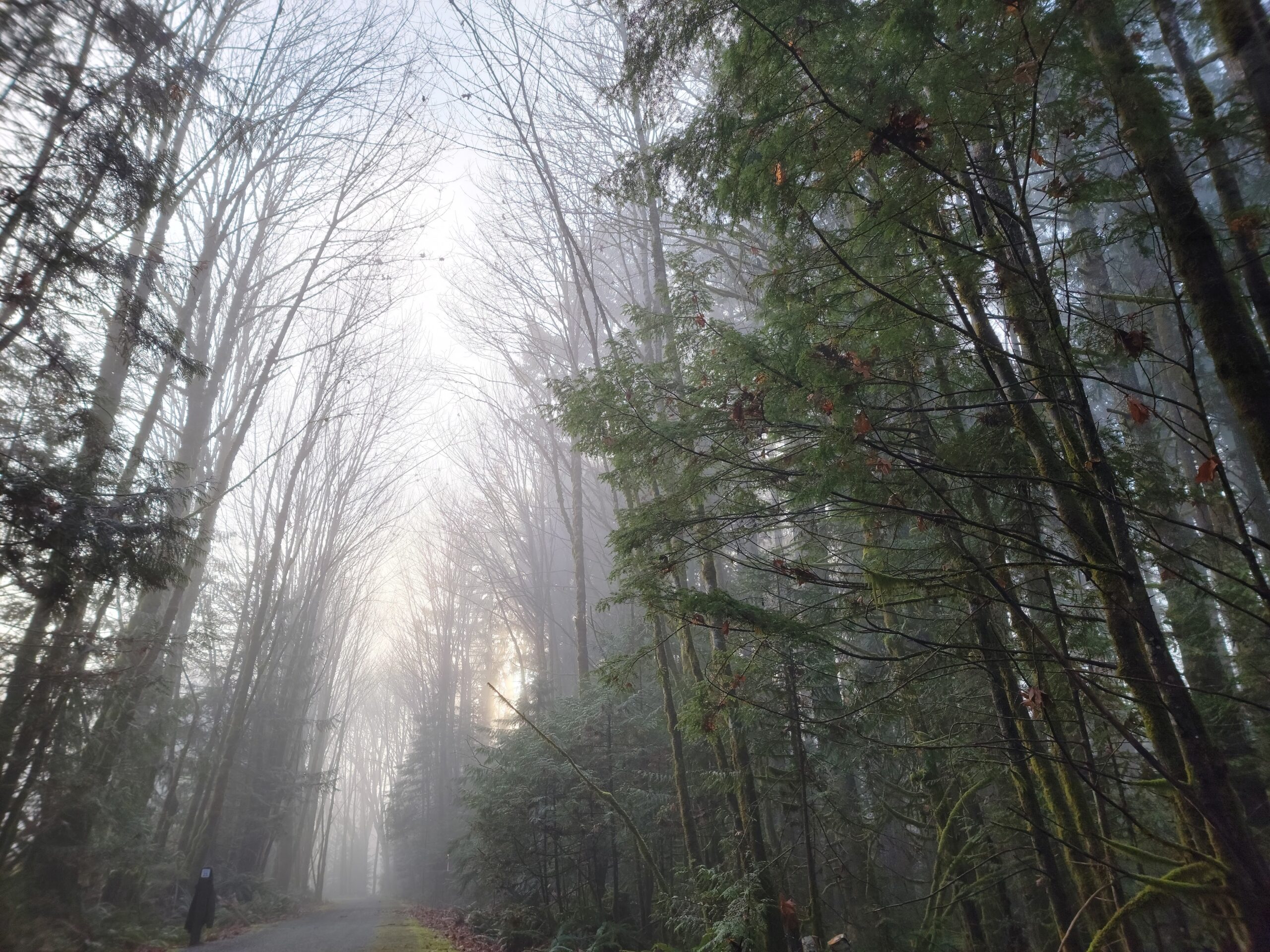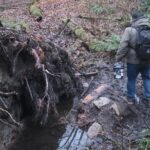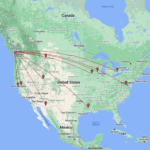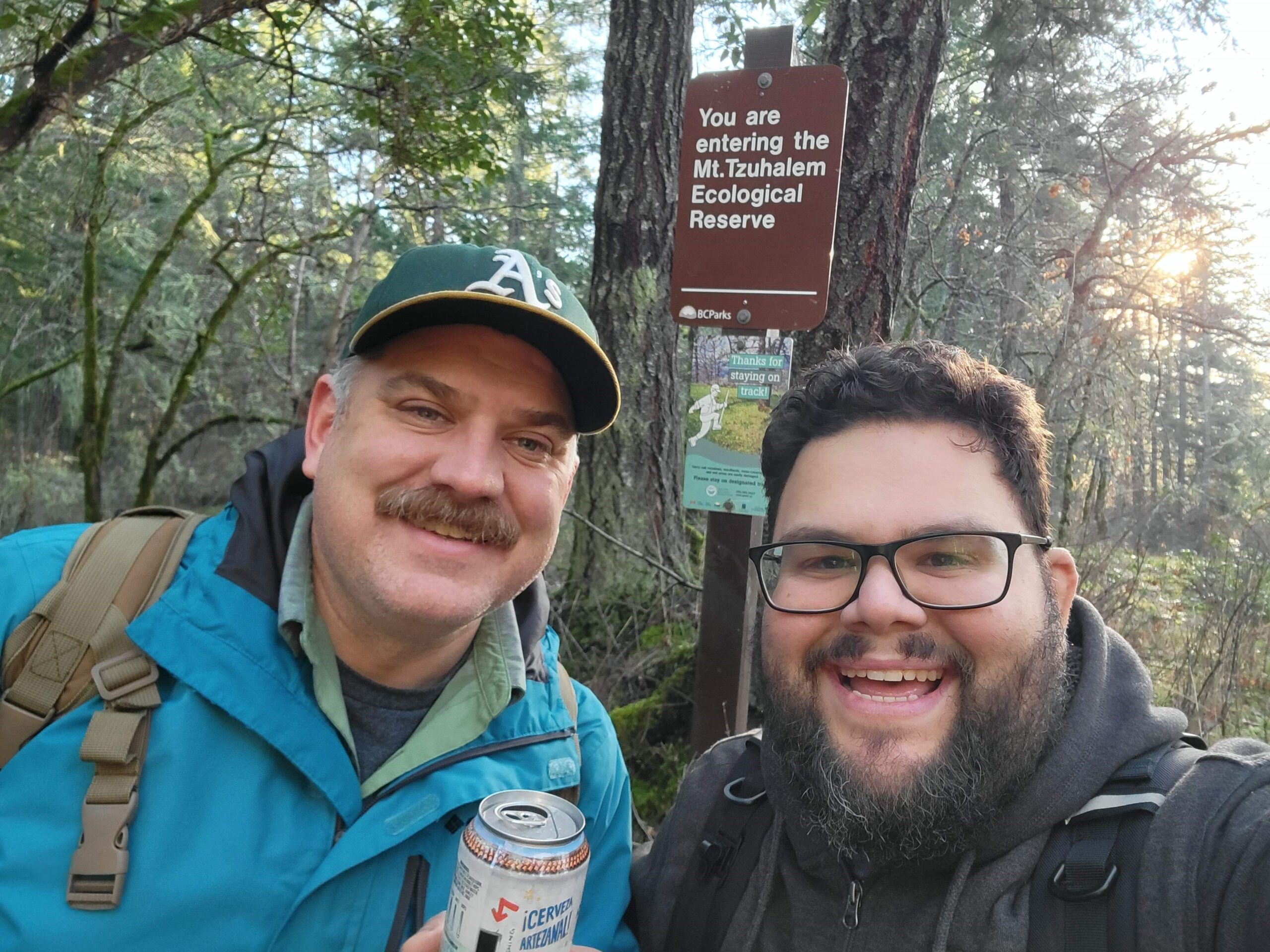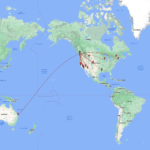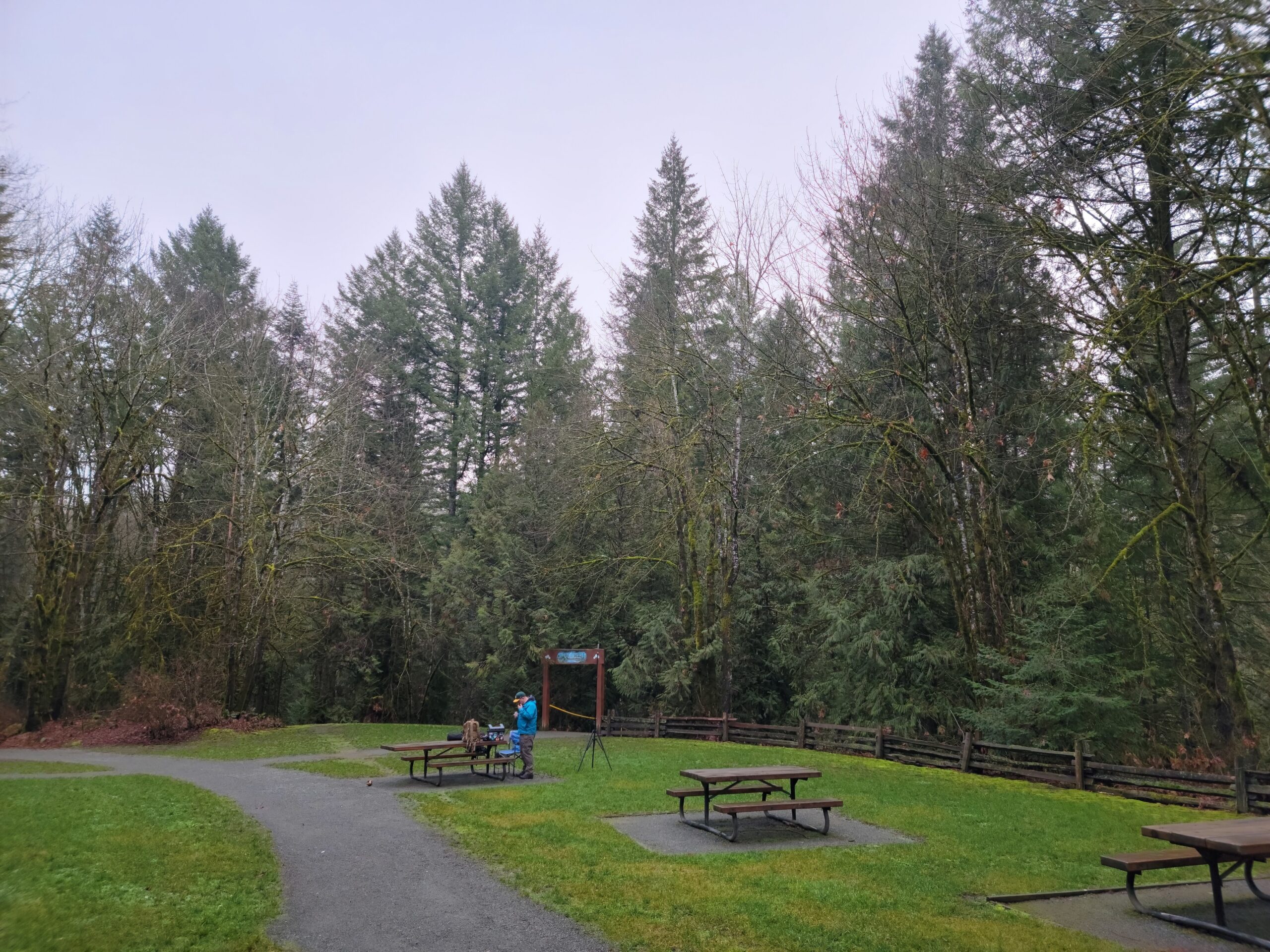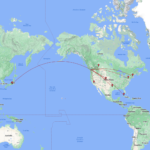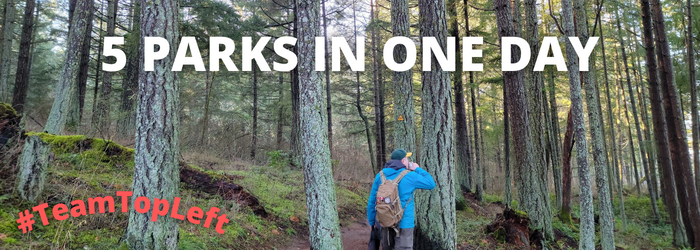
On December 16, #TeamTopLeft scored our first POTA Rover Award by activating five different park entities in a single UTC day. We set off early from Victoria, up the Malahat Highway towards our first stop – the Cowichan River.
The Cowichan River is a Canadian Heritage River, flowing from Cowichan Lake. It is the center of Cowichan River Provincial Park (POTA VE-3379), but it also spans two other provincial parks: Cowichan River National Heritage Area (POTA VE-6131) and The Great Trail of Canada National Scenic Trail (POTA VE-5082). The park is home to hundreds of animal species, including the native and endangered Vancouver Island ermine and more than 200 species of birds.
The area is known as a “first-class recreational corridor” with activities, from swift river kayaking to canoeing and tubing, from peaceful nature walks to exceptional hikes, all taking place on and around a river flowing through a glaciated valley in a stunning landscape. The park is internationally recognized for its wild salmon and steelhead trout, and for the historic Cowichan River Footpath that winds through dense Douglas-fir and Western Hemlock forest.
We arrived at this three-fer POTA around sunrise, after a bit of dirt road travels under heavy fog. While not completely freezing, it was cold and windy and we managed to activate the site on HF SSB.
After activating an all-time new park in Cowichan River, we headed southeast to Mount Tzuhalem Ecological Reserve (POTA VE-3854). While not a new park, it was new to us.
Mount Tzuhalem Ecological Reserve is an 18-hectare parcel of land just four kilometres from Duncan in CN88. Ecological reserves offer a higher level of protection than regular provincial parks and are created to preserve an area while also allowing research and educational activities to continue. Mount Tzuhalem was created to protected a representative portion of the Garry oak wildflower meadow.
Vancouver Island is known for its rare Garry oak ecosystems, but you may have never seen it’s transformation into a lush wildflower meadow bursting with vibrant purples, yellows, blues, pinks and whites. These ecosystems, of which Mount Tzuhalem Ecological Reserve is an excellent example, are unique and rare in Canada, and known for hosting a high concentration of rare species. According to the BC Parks Foundation, a great time of year to visit is when the wildflowers are in full bloom, usually in April and May. On a sunny spring afternoon, the entire Ecological Reserve is buzzing with insects pollinating the abundant colourful flowers, from the purple camas, to the pink sea blush and yellow buttercups.
Our vantage point was an easy 10 minute hike up a well-maintained trail and with our trusty Alpha vertical antenna, we were able to get some lovely coverage, from Australia to Quebec.
Once you’ve activated four parks on one of the shortest days of the year – why not go for five? We got our QSOs and headed out to a nearby and new-to-us spot, Bright Angel Park (POTA VE-3258). Part of the Capital Regional District’s park system, Bright Angel offers “tranquil, forested trails with the stunning Koksilah River flowing under the Cowichan Valley’s most popular suspension bridge.” The park is easily accessible, with playgrounds, picnic tables, and even a woodstove-style cooker that is available to the public for BBQs. The park sees 80,000 visits a year, and makes for an easy day trip from Victoria.
We set up on a picnic table and got to work on HF SSB. Picked up Japan and some East Coast hunters. We didn’t stay long, as we were losing daylight and the temperature kept dropping. But the contacts were worth it. When we went home to log, it turns out we qualified for an award we didn’t know existed for POTA activators!

Big thanks to the rovers and activators at other parks who managed to pull is in through the noise. We ended up with a fantastic 20 Park-to-Park QSOs, all of which were new parks for us as hunters. If it wasn’t for the hunters, none of this would have been possible. Remember – ham radio is a contact sport!

